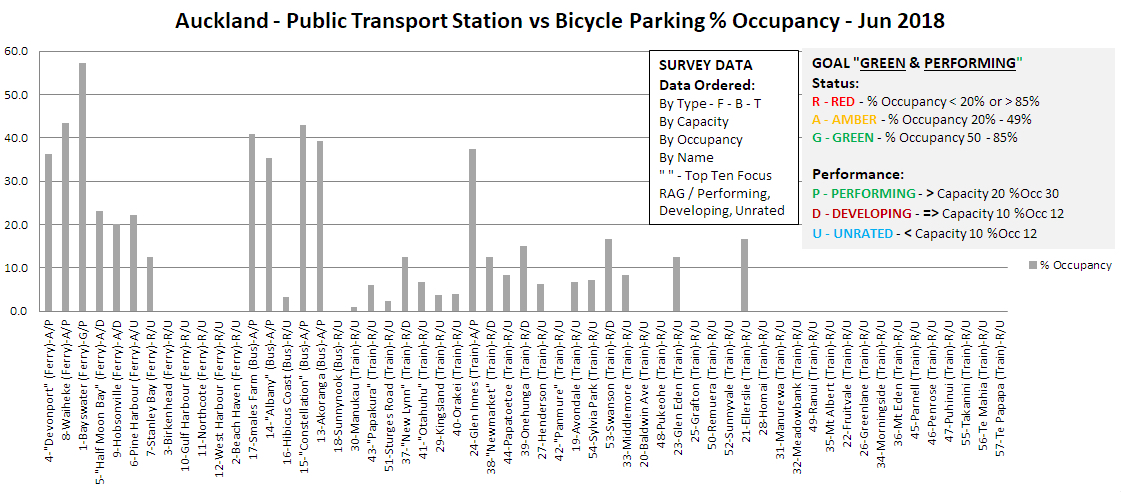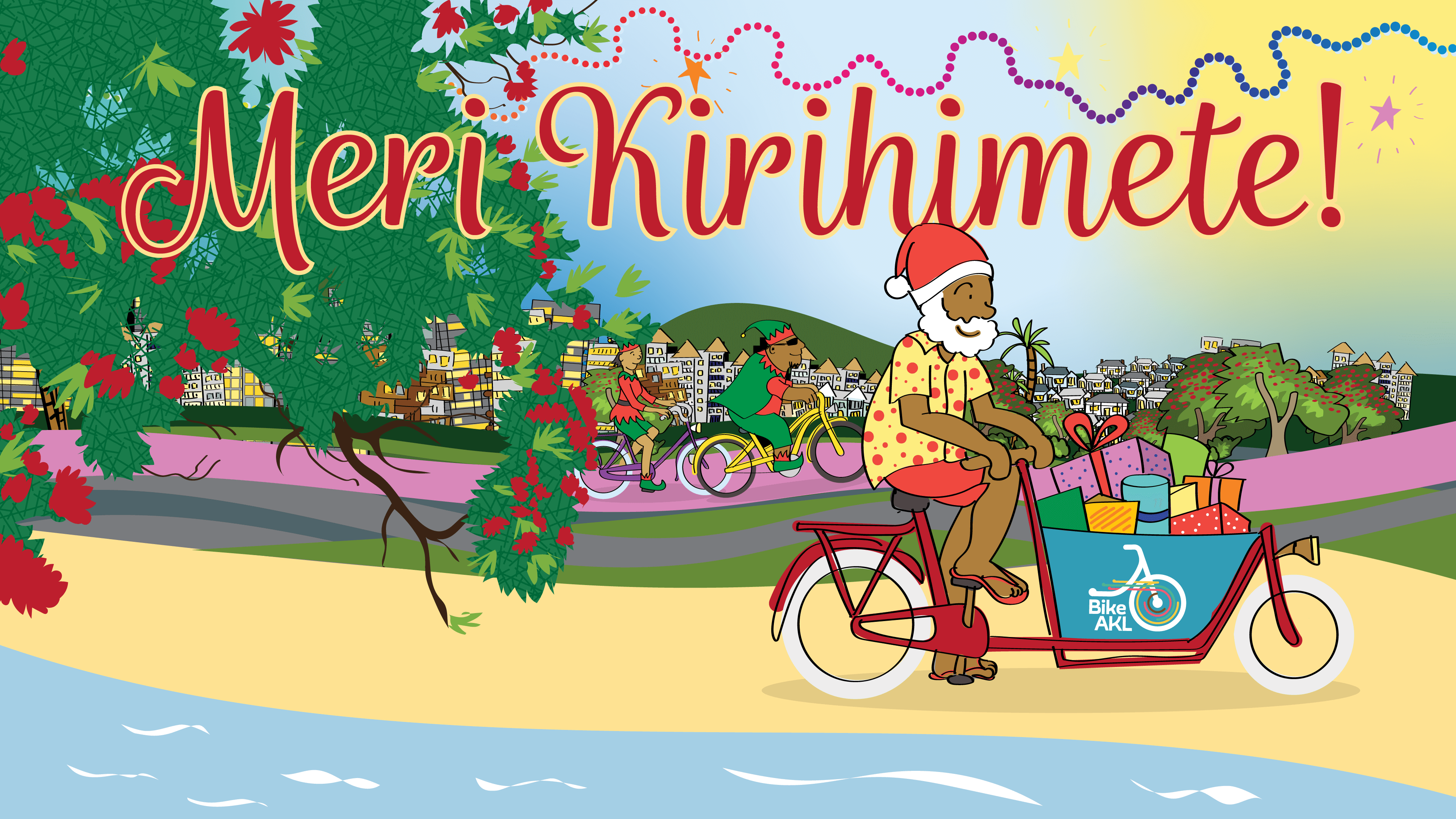Travel by bicycle in Auckland is growing fast. With cycle infrastructure providing good fast routes to locations across the city, we now need to add bike parking to match – all of those bicycles have to have a safe home whilst we are busy in the shops, offices and cafes, and we’re going to need great parking at public transport hubs, too. Matt Cole, who’s the Auckland ambassador for Bikes Welcome, gives an update below.
Over the past few months, Bikes Welcome and Bike Auckland have been working with Auckland Transport to help AT plan improved delivery of good, ‘fit for purpose’ bike parking at public transport nodes across Auckland.
We now have an established, measured process: assessing supply, assessing demand, prioritising, delivering and monitoring use. Bikes Welcome has provided a service now well used by Auckland cyclists, where you can request bike parking and see where others have already made requests.
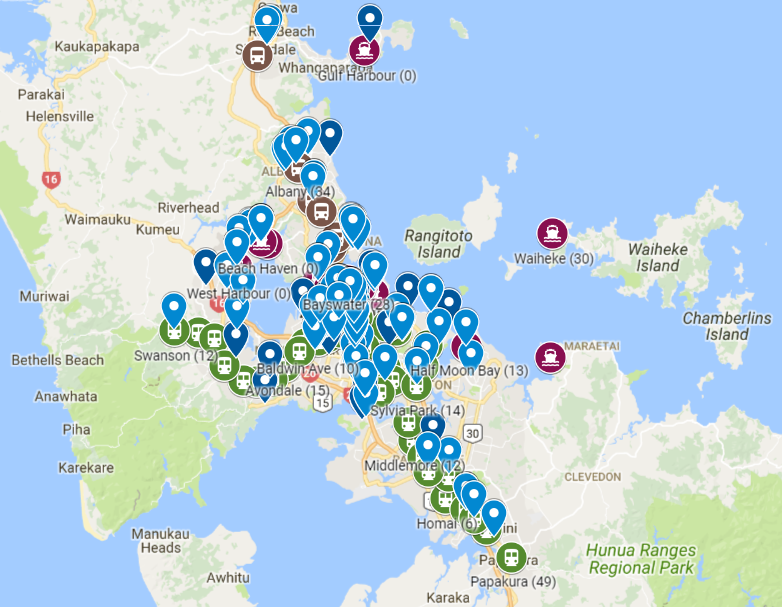
What have we learned so far?
Bicycle parking in a city like Auckland is essential to support uptake in cycling and to make the streetscape safer and more intelligible for pedestrians and all road users. It’s easy to get bike parking wrong, and requires a focused team with energy (and solid public support) to get it right.
Good bicycle parking provides a great standard of facility, in the right location; and is heavily used, or has been well-placed knowing that future development will see it being well used.
Poor bicycle parking is equally easy to spot. Here, the facilities are often of a type that makes it impossible to secure both the frame and wheels to the stand. The worst, so called wheel-benders, will happily break your bicycle, and are usually not well located or signposted. As a consequence, they’re seldom used and just add to unnecessary street clutter. These need to be replaced with good bicycle racks, or be removed.
Looking beyond the city streetscapes, Auckland’s public transport stations and terminals are vital locations for great bike parking. We’re increasingly a city of multi-modal transport, where a journey can be started by bicycle and finished by rail, bus or ferry – or, of course, vice versa. And with bike share now part of the picture, the demand for ‘trip-chaining’ by using a bike for the first and last mile will only grow.
Of course, it’s not just about the bike racks themselves. Safe and intelligible access by bike to and from the location is a key factor. This includes clear signage, local way-finding signs, and good maps showing what is where. For public transport locations, clear signage within and around the stations/terminals is crucial.
What makes for great bicycle parking?
Obviously, you want a place to park your bike that’s easy to find, easy to get to, easy to get in and out of – and you’re confident your bike will be there and in good order when you return.
Short-term bike parking This is the type of parking you might use when just popping into a shop or restaurant; great for securing the bicycle for up to 3 hours. Here’s what makes for good short-term parking:
(a) Secure bicycle stands, allowing frame and both wheels to be easily secured to the stand
(b) Located for great access and good passive security
(c) Inverted U (or Sheffield Design) stands, spaced at 1.2 to 1.4m apart allowing easy bicycle access
(d) Brushed stainless steel (grade 316) with mid-bar and tapping rail to cater for our maritime environment
(e) Ease of use for all types of bicycle and cyclist physical ability levels
(f) Protected from motor vehicle access
(g) Clearly signposted with local way-finding signs and a city cycle parking map
(h) Chosen to fit in with the local environment, improving amenity and safety for all.
Long-term bike parking This is what you need when the bicycle is going to be there for a while, whilst you are at work or away for the day. Great for securing the bicycle for 3 to 9 hours or more. To do the job, it ideally needs to have:
(a) All of the short-term criteria
(b) Cover for weather protection
(c) Excellent lighting for all hours use
(d) Weather protection and even better, physical security, such as a cage or hangar, where bicycles are secured away from thieves
(e) Active security monitoring such as closed-circuit television (CCTV)
(f) If possible, sited where local security teams are available.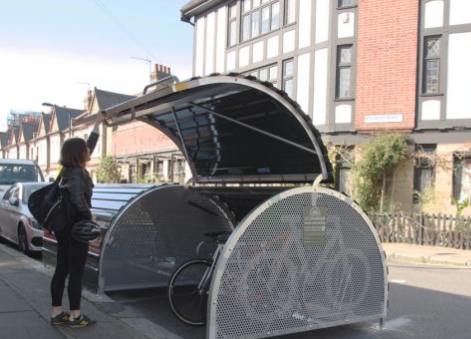
So how are we doing?
We’ve assessed bike parking at public transport locations, to get a sense of how suitable and how well-used it is. The graph below tells us that Auckland has not yet hit the mark. The blue bar shows how many bike parking spots are available at public transport locations, and the red bar shows how much or how little it is being used.
On closer inspection, we found most people are looking to park for over 3 hours, and often up to 6 – 9 hours. Obvious, really: many are using the facilities as a home for the bicycle whilst they are at work, or away for the day. However, as of June 2018 when this survey was done, the available bike parking is more suited to short-term use for the casual user who only needs to park for up to 3 hours. So it’s no surprise it’s currently underused.
The locations are listed by Ferry, Bus, and Train, and if you look closely, you can see each station or terminal name and type, followed by a few letters. Those letters are code for whether the facilities are considered Red – Amber – Green, and also whether they’re Performing or Developing (or as yet Unrated). This is a quick system that captures the basics for now.
- (R)ed locations have bike parking that’s either very under-used or verging on full, with occupancy of <20% or >85%, and red status should trigger an action. For example, is the bike parking underused because short-term stands are fitted when what people need is secure covered long-term parking, or perhaps cycle access to station is poor? If occupancy is over 85%, that’s also a cue for action: adding more capacity, budget permitting.
- (A)mber locations are in the 20-49% occupancy range, and should be monitored to assess how to move them to Green status.
- (G)reen locations are currently working about right, with average occupancy of 50-85%. They’re well used, but still have potential for future growth. As you can see, only the Bayswater Ferry Terminal hits this target so far.
And here’s the same info, but showing the current occupancy as a percentage. You can see at a glance the most valuable players and the under-performers.
The goal is for each location to achieve the (P)erforming level: i.e. 20 or more stands (room for at least 40 bikes) and an average occupancy of over 30%. (D)eveloping is for facilities which are underway, have 10 or more stands (room for at least 20 bikes), but average occupancy as low as 12% – this is too low, so it would trigger an assessment. (U)nrated is reserved for very low capacity and occupancy locations, where attention is needed to create a fit-for-purpose bike parking capability.
And obviously, the more (G)reen and (P)erforming locations, the better.
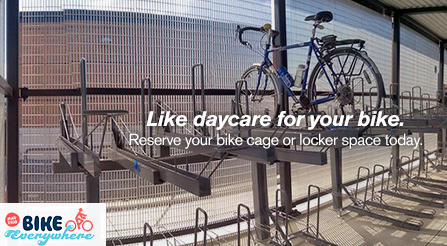
How to get involved?
We need your help and support. Firstly, to let us know where you need what type of bicycle parking, which you can do by using the form here.
You can also use that page to report poor bicycle parking that needs to be replaced or removed, by adding a brief note in the description section.
And of course, do try out the newly installed facilities and let us know how they work.
If you have a great experience or a question or an insight to share, we would also love to hear from you – please comment below, or get in touch via Bikes Welcome. We can also forward questions to the right people inside AT.
Future goals
Working as a team – with Bikes Welcome, Auckland Transport and Bike Auckland – ultimately we want to see quality bike parking across the city, including at all public transport stations and terminals, delivered according to best practice, with greater access to information including mobile app maps.
It’s a big retrofit job ahead to install new and improved bike parking. Auckland Transport’s focus for spending will be on the priority public transport stations to begin with, along with local centres, and then working out from there. Please keep registering your requests – this will help to prioritise your needs.
Bikes Welcome will create a simple dashboard showing the progress achieved, and share it with you.
We also want to see better access to information:
(a) Physically, through wayfinding signs and map displays in the streets and public transport stations
(b) Adding more channels for you to enter your bike parking needs
(c) Providing better online and mobile application tools to help you find and use the excellent facilities being rolled out.
There is still a great deal to do, and progress will be limited by the size of the teams and budgets available, but we are determined to support you in making cycling Auckland’s fastest growing transport mode. Happy cycling and safe, secure cycle parking!
–Matt Cole



